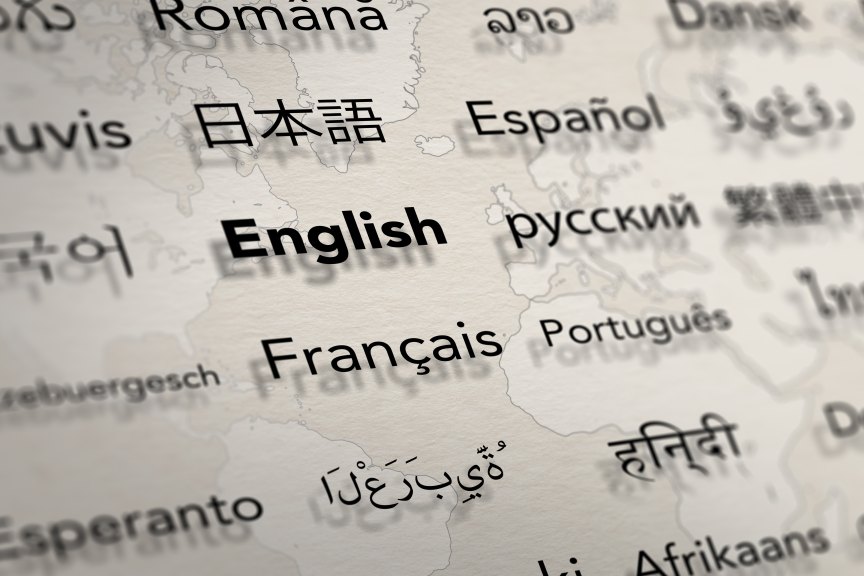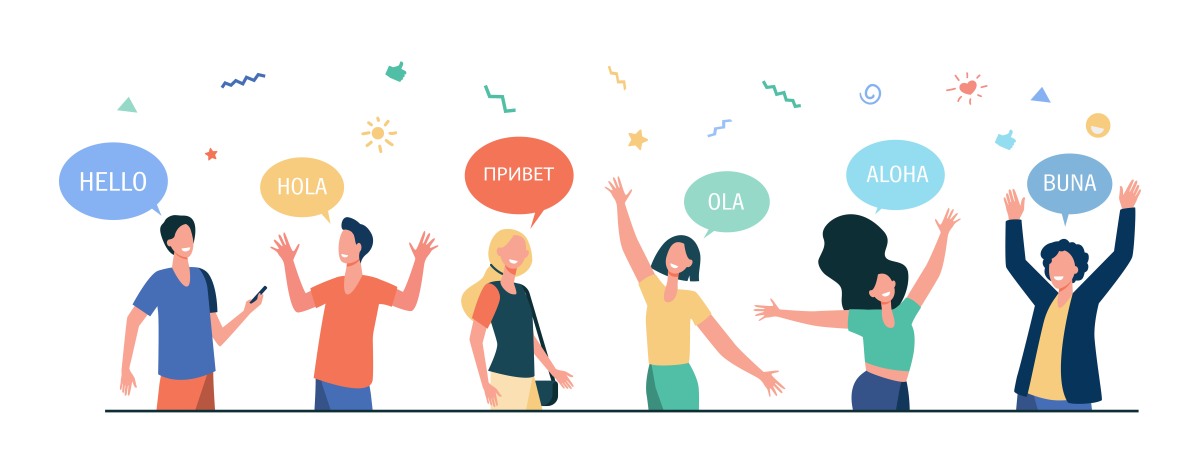You might be wondering: How does having a website in different languages impact sales? The answer is simple: It makes it easier for people who don’t speak English as their first language to find and buy from you!
It’s true that the number of people who speak a language other than English has grown steadily in the past few decades. In fact, according to the Pew Research Center, “the number of non-English speakers in the United States has grown by 71% since 1980.” So if you’re not already offering your website in multiple languages, it’s time to consider it.
Websites that are translated into other languages have higher conversion rates than those that aren’t. Studies show that websites with multilingual content get up to 36% more traffic from search engines than sites that are only available in one language. And 63% of all internet users say they would feel more positively about a brand if it offered products or services in their native language (Can’t Read Won’t Buy Study). Even a number as huge as 40% of people won’t buy at all in other languages. You can have a big shortcut in translating your website with the help of a translation management system.
Overview of How to Make Your Website Multilingual
But how can you make your website multilingual?
You can outsource the process.
In this case, the first step is choosing a digital marketing agency that specializes in B2B multilingual marketing strategy. They will help you to create a strategy that targets specific countries and languages. The digital marketing agency will also be of great help in defining which languages will be most beneficial for your business.
The next step is translating your content into another language so it can be read by potential customers in their native tongue. This involves hiring translators who specialize in translating content from English into another language
If your website is only available in your native language, it will not be accessible to many potential clients.
You can do the translation in-house, inside your existing structure, or expand your team.
In this case, to go multilingual you need to:
- Target a specific market and determine your goals – this greatly depends on your product, and which market will be your next one.
- It is important to localize your website, not just translate it. Localization is like a holistic approach to translation. Localization will include cultural differences in the translation process.
- Have a team that will be working on expanding your reach in the targeted market. A localization manager could be a great fit for this, working closely with marketing and sales managers. This step will consist of many smaller steps like creating a multilingual marketing strategy, doing cold emails, creating buyer personas, etc. You can always outsource a lot of this to digital agencies.
Want to maximize your reach and increase sales with a B2B multilingual marketing strategy?
Contact Growth Hackers
How to Create a B2B Multilingual Marketing Strategy
If you aren’t convinced yet about how powerful a multilingual marketing strategy is, let us show you how.
First, let’s talk about why having a website in different languages impacts sales. When someone visits your site, they’re going to be more interested in what you have to offer if they can read it in their native language—and they’ll have an easier time understanding what it is that you do.
This means that people who visit your site on mobile devices will spend more time browsing around and looking at products or services than they would otherwise. And that means more sales!
The first thing that happens when someone visits a site in their native language is that they feel more comfortable there—it feels like home. This leads them to stay longer on the site and browse around more.
From this point, it’s no secret that having a website in different languages will increase your sales. But how exactly does it work?
We’ve got some action steps for you:
- You need to make sure your content is translated by native speakers. This will ensure that the language used in your content matches the target audience’s native tongue and cultural norms.
- If you’re selling a product, make sure you have a quote from the customer in their native language (if possible). This will show them that you’re serious about catering to their needs and that they’re not just one of many customers on your list.
- Hire someone from their country who understands the culture and has experience working with people from that region to help you market your product effectively in their country. This person can help you avoid making mistakes that could potentially lead to losing potential customers due to cultural differences or misunderstandings about what works best for them in terms of their culture (e.g., certain colors or images may be taboo in certain cultures).
How Having a Multilingual Marketing Strategy will Improve Your Sales
The global economy is more interconnected than ever before, and businesses are increasingly realizing the value of a multilingual marketing strategy. This is especially true for B2B businesses, which rely on communication and transparency to build trust with their customers.
A multilingual marketing strategy can be incredibly effective in building relationships between your business and your clients. When you’re able to communicate directly with them in their native language, they’re more likely to feel involved and valued by your brand. And when you’re able to explain complex processes in a way that makes sense to them—and doesn’t require a translator—you’ll find yourself on an equal footing with them, rather than simply being an outsider trying to sell something.
Here are the ways how you will be closer to your potential customers (therefore sales) if you implement B2B multilingual marketing strategy:
1. Unique Buyer Personas for each Targeted Market
While creating your strategies either marketing or sales, you need to create a buyer persona for it. Creating a buyer persona is creating your ideal buyer with as many characteristics as possible so you have a specific insight.
By researching the market where you want to grow you can develop a buyer persona for the targeted market and with more success fulfill the gaps in the targeted market. For example, in Germany, they have their version of Linkedin, which would be good to cover in your German market.
2. Possibility of Cold Emailing
Having the pitch in the native language allows you to better connect with your potential customer. It provides you with better reach and personalization that can be a cutting edge in gaining more answers and thus sales.
3. Personalization through Translation & Localization
People respond more when you communicate with them with an aim to create a meaningful connection, than with the aim to sell. Personalization in general increases the number of potential leads.
Having translated campaigns, ads, and content on your website will make them feel more like something natural and easy to understand, and therefore to buy.
The impact of using pronouns in customer service or in your content, like – We have this covered for you. I will make sure this reaches the right person etc. These are valuable examples of personalization that works! Imagine then what a native language can do!
Propel your business beyond competition by creating a B2B multilingual marketing strategy today!
4. Finding Gaps in the Local Marketing Campaigns
Every market has its specifics. There is no shortcut to the research part.
Research is more efficient if you narrow it to the local market.
Also, there are cultural differences, that can be properly managed only with local market research.
You will develop unique selling points (USPs) for each market. For some markets they can be the same, for some they will differ. Catch the difference and feel the pulse of the specific market.
Unique selling points will set you apart from your competition and it is critical to emphasize them.
Except for the research part, SWOT analysis will help you to figure out this and a detailed analysis of how your competitors show up in the specific market.
Focus on the gaps your competitors have or on the part that is covered but is not performing so well (you will figure this out by looking at reviews for example).
5. Multilingual SEO
Multilingual SEO if done properly will give you access to far more people.
It is essential to do keyword research in the local language for this.
Hiring a localization manager for the process of not just translation but for the cultural differences in the market is a very good solution to this.
Businesses often fail to capture content’s cultural and linguistic relevance when they’re translating their marketing content.
You need to start with keyword research and buyer personas from scratch. Do not assume that your new market is the same as the previous one. This is one of the most frequent mistakes that can significantly delay your progress in a foreign market.
You can collaborate with professional marketing agencies specializing in SEO strategy for particular markets to maximize your multilingual content’s potential.
Closing Thoughts About Utilizing B2B Multilingual Marketing Strategy to Increase Sales
You should not be discouraged by the processes around making your website multilingual, because the advantages are far more!
According to research from MIT Sloan Management Review, companies that use more than one language in their sales process see an increase of up to 50% in sales results compared with companies that use only one language!
Do not forget to start small. Choose the right translation management system to help you tackle this faster, together with an industry-local expert or digital agency.
Growth Hackers is a reputable B2B branding agency helping businesses from all over the world grow. There is no fluff with Growth Hackers. We help entrepreneurs and business owners create a B2B multilingual marketing strategy, generate qualified leads, optimize their conversion rate, gather and analyze data analytics, acquire and retain users, increase sales and productivity. We go further than brand awareness and exposure. We make sure that the strategies we implement move the needle so your business grow, strive and succeed. If you too want your business to reach new heights, contact Growth Hackers today so we can discuss about your brand and create a custom growth plan for you. You’re just one click away to skyrocket your business.







1 Comment
I have read your blog on a Multilingual Website. Having a multilingual website can have several benefits for your business. Here are some ways a multilingual website can help you grow your business:
1.Reach a wider audience
2.Increase customer trust
3.Boost search engine optimization (SEO)
4.Gain a competitive advantage
5.Improve customer experience
These are some points which I thought to include in your article. Overall, a multilingual website can help you expand your customer base, increase customer trust and loyalty, improve your SEO, gain a competitive advantage, and improve the customer experience.